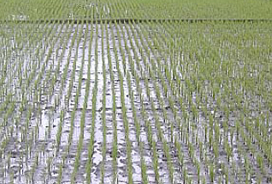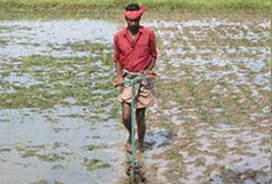Mechanical weed control
What is Mechanical Weeding?
Weeds are controlled using a rotating hoe (rotary or conical weeder) to cultivate, uproot and bury emerging young weeds between rows of rice plants. Mechanical weeding is a part of integrated weed management that refers to the integrated use of cultural, manual, mechanical and/or chemical control methods.
Why Control Weeds?
- Prevent yield loss due to weed competition.
- Maintain purity and/or quality and market price of harvested grain.
- Prevent build-up of weed seeds in soil.
- Prevent weeds that may attract insects or rodents (rats) or act as a host for diseases.
- Prevent clogging of field irrigation channels to facilitate water flow.
- Reduce time and cost of land preparation and weeding operations.
Why Mechanically Weed?
- Non-chemical and ecologically sound.
- Less labor needed and costs less than hand weeding.
- Less drudgery and stress than in hand weeding.
Limitations of Mechanical Weeding
- Only suitable for row-planted crops.
- Difficult in hardened soil or where water is limited.
- Difficult to remove weeds within crop rows.
- Only effective with young weeds (2- to 4-leaf stage).
- Needs more labor (6-8 person-days per ha per weeding) than chemical weed control.
- Still some drudgery and stress on labor (if rotating hoe is motorized, it will help).
How to Mechanically Weed?
- Weeds need to be controlled from planting until the crop canopy closes.
- With 2-3 cm of water in the field, start using a rotating hoe when emerged weeds are young (3- to 4-leaf stage).
- Repeat the hoeing one to two more times at 20-22 and 30-32 DAT or 30-32 and 40-42 DAS.
- Remove the weeds near the plants by hand.
- Generally hoeing follows the row direction up the field and back. If the field is uniformly transplanted on a regular square pattern, it may be possible to hoe in perpendicular directions.
- Use good land leveling and standing water to reduce weeds.

Plant in straight rows for mechanical weeding.

Early control of weeds is important.
Developed with input from B Chauhan, MA Bell, V Balasubramanian, and JF Rickman.








